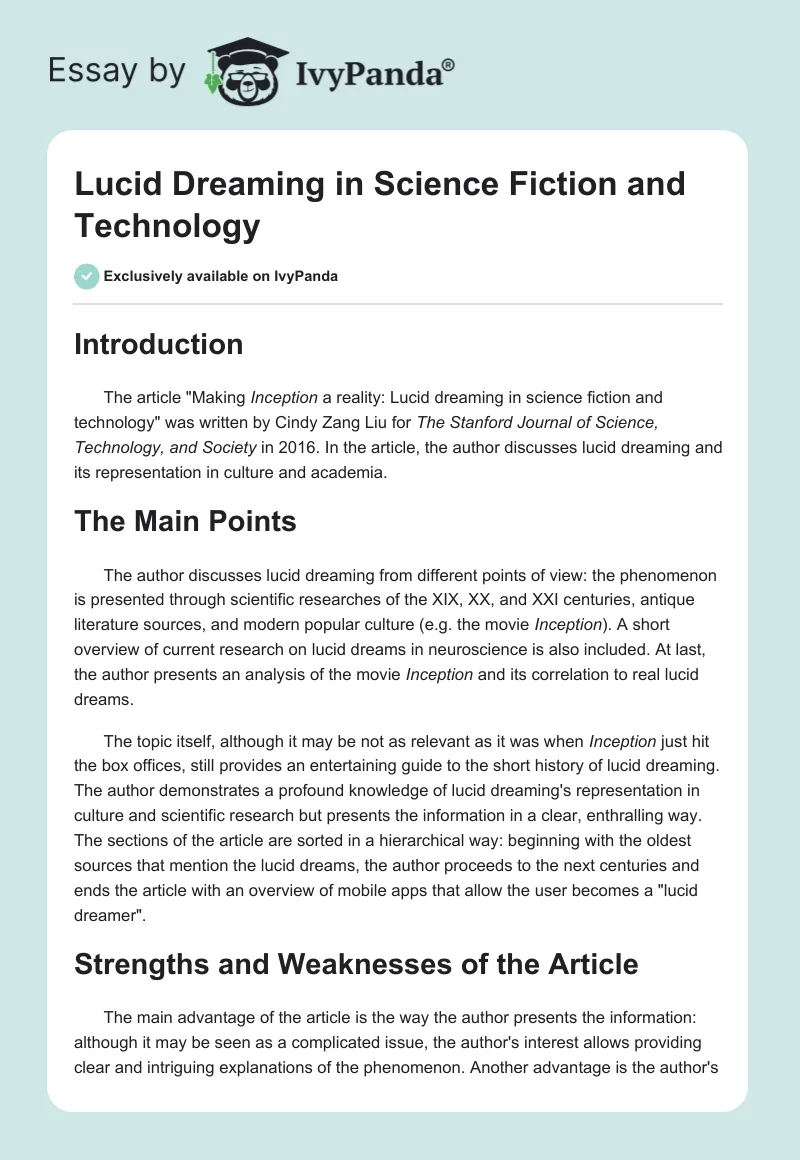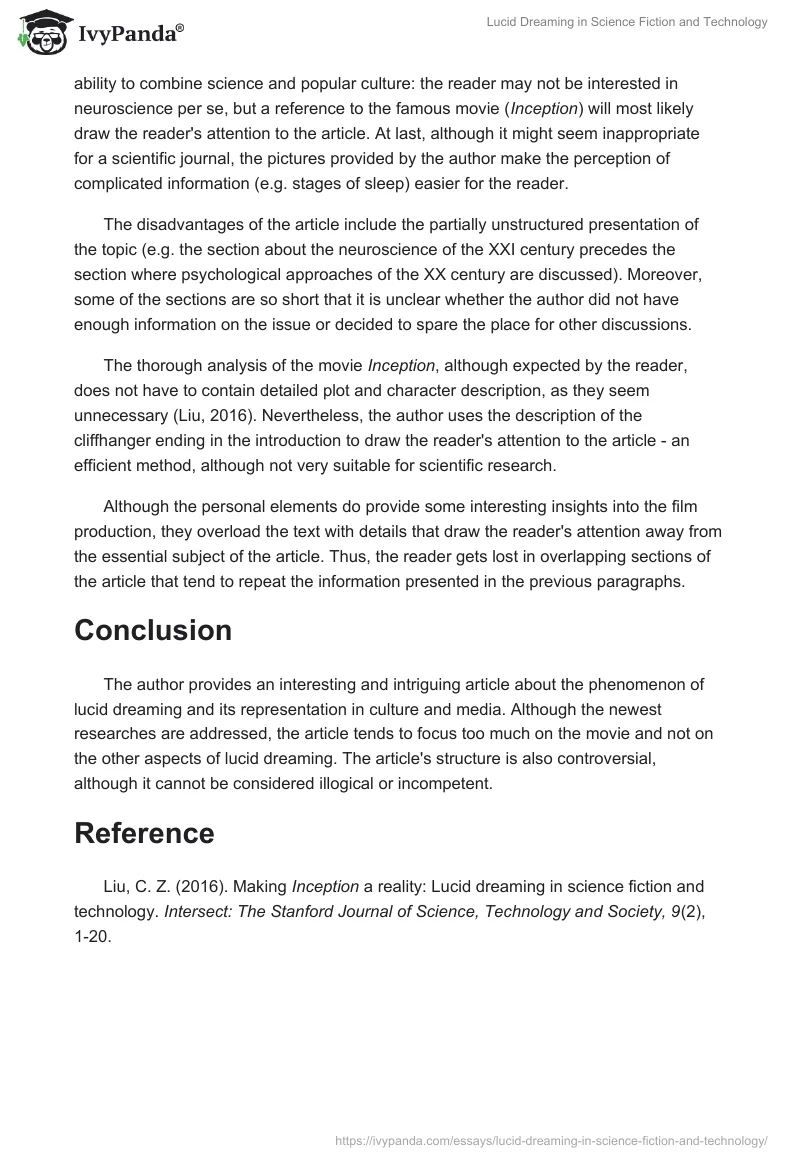Introduction
The article “Making Inception a reality: Lucid dreaming in science fiction and technology” was written by Cindy Zang Liu for The Stanford Journal of Science, Technology, and Society in 2016. In the article, the author discusses lucid dreaming and its representation in culture and academia.
The Main Points
The author discusses lucid dreaming from different points of view: the phenomenon is presented through scientific researches of the XIX, XX, and XXI centuries, antique literature sources, and modern popular culture (e.g. the movie Inception). A short overview of current research on lucid dreams in neuroscience is also included. At last, the author presents an analysis of the movie Inception and its correlation to real lucid dreams.
The topic itself, although it may be not as relevant as it was when Inception just hit the box offices, still provides an entertaining guide to the short history of lucid dreaming. The author demonstrates a profound knowledge of lucid dreaming’s representation in culture and scientific research but presents the information in a clear, enthralling way. The sections of the article are sorted in a hierarchical way: beginning with the oldest sources that mention the lucid dreams, the author proceeds to the next centuries and ends the article with an overview of mobile apps that allow the user becomes a “lucid dreamer”.
Strengths and Weaknesses of the Article
The main advantage of the article is the way the author presents the information: although it may be seen as a complicated issue, the author’s interest allows providing clear and intriguing explanations of the phenomenon. Another advantage is the author’s ability to combine science and popular culture: the reader may not be interested in neuroscience per se, but a reference to the famous movie (Inception) will most likely draw the reader’s attention to the article. At last, although it might seem inappropriate for a scientific journal, the pictures provided by the author make the perception of complicated information (e.g. stages of sleep) easier for the reader.
The disadvantages of the article include the partially unstructured presentation of the topic (e.g. the section about the neuroscience of the XXI century precedes the section where psychological approaches of the XX century are discussed). Moreover, some of the sections are so short that it is unclear whether the author did not have enough information on the issue or decided to spare the place for other discussions.
The thorough analysis of the movie Inception, although expected by the reader, does not have to contain detailed plot and character description, as they seem unnecessary (Liu, 2016). Nevertheless, the author uses the description of the cliffhanger ending in the introduction to draw the reader’s attention to the article – an efficient method, although not very suitable for scientific research.
Although the personal elements do provide some interesting insights into the film production, they overload the text with details that draw the reader’s attention away from the essential subject of the article. Thus, the reader gets lost in overlapping sections of the article that tend to repeat the information presented in the previous paragraphs.
Conclusion
The author provides an interesting and intriguing article about the phenomenon of lucid dreaming and its representation in culture and media. Although the newest researches are addressed, the article tends to focus too much on the movie and not on the other aspects of lucid dreaming. The article’s structure is also controversial, although it cannot be considered illogical or incompetent.
Reference
Liu, C. Z. (2016). Making Inception a reality: Lucid dreaming in science fiction and technology. Intersect: The Stanford Journal of Science, Technology and Society, 9(2), 1-20.


